Home>Garden Essentials>What Kind Of Greenery Do I Use In A Silk Bouquet
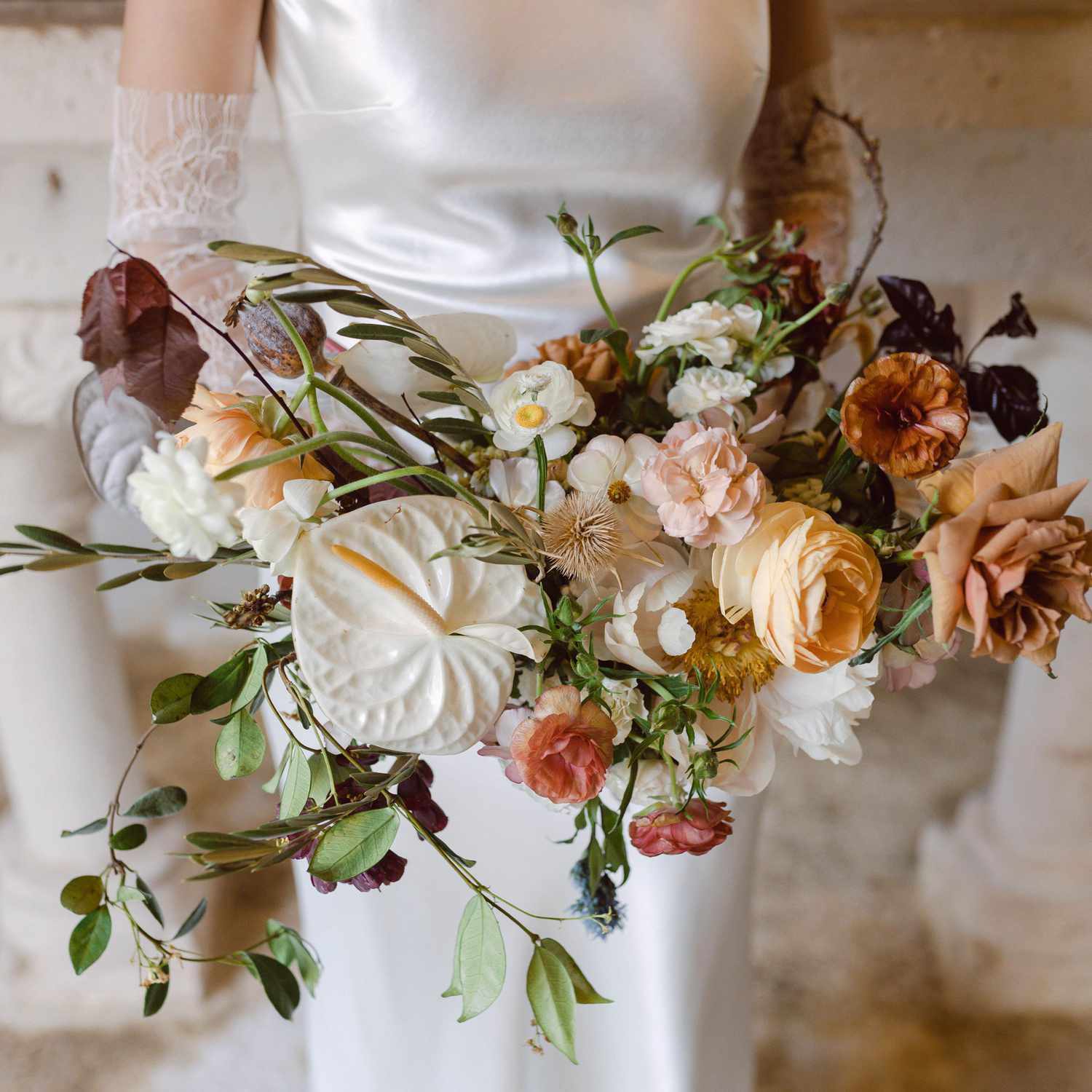

Garden Essentials
What Kind Of Greenery Do I Use In A Silk Bouquet
Modified: April 23, 2024
Looking for the perfect greenery for your silk bouquet? Discover different garden-inspired options to enhance the beauty and realism of your arrangement.
(Many of the links in this article redirect to a specific reviewed product. Your purchase of these products through affiliate links helps to generate commission for Storables.com, at no extra cost. Learn more)
Introduction
Welcome to the wonderful world of silk bouquets! Whether you’re planning a wedding, a special event, or simply want to add a touch of elegance to your home, silk bouquets are a fantastic choice. They offer the beauty and charm of fresh flowers, but with the added benefit of lasting much longer!
One of the key elements in creating a stunning silk bouquet is the choice of greenery. Greenery not only adds a lush and natural look to the bouquet but also acts as a base to highlight the vibrant colors of the flowers. It brings depth, texture, and dimension to the arrangement, making it visually appealing.
In this article, we will explore different types of greenery that you can use in your silk bouquet. Each type of foliage brings its own unique characteristics and style, allowing you to create a bouquet that perfectly suits your taste and aesthetic.
So, let’s dive in and discover the world of greenery for silk bouquets!
Key Takeaways:
- Choose the right greenery for your silk bouquet to add texture, depth, and a natural element. Consider the theme, color palette, and shape of your bouquet for a visually appealing and well-balanced arrangement.
- Experiment with different greenery choices to create a unique and beautiful silk bouquet that reflects your personal style and vision. Let the right greenery enhance the splendor of your bouquet and add a touch of nature and enchantment to your special day.
Types of Greenery for Silk Bouquets
When it comes to choosing greenery for your silk bouquet, there are countless options to consider. Each type of greenery has its own distinct qualities that can complement the overall look and feel of your bouquet. Here are some popular choices:
- Eucalyptus: Eucalyptus leaves are a favorite among many floral designers. They feature a lovely silvery-gray color and a subtle fragrance. Eucalyptus is known for its long, elegant stems and delicate foliage, which adds a touch of sophistication to any bouquet.
- Ferns: Ferns are versatile greenery that comes in various textures and shapes. They have delicate, lacy fronds that add a soft and whimsical touch to your bouquet. Whether you choose Boston ferns, maidenhair ferns, or leatherleaf ferns, they all bring a natural and airy feel to the arrangement.
- Ivy: Ivy is a classic greenery choice that adds a touch of romance to any bouquet. Its trailing vines create a cascading effect that adds movement and depth. Ivy comes in different varieties, such as English ivy and Algerian ivy, each with its own unique leaf shape and color.
- Boxwood: Boxwood is a popular choice for adding a structured and formal look to a silk bouquet. Its small, dense leaves create a neat and compact appearance. Boxwood adds a touch of elegance and can be used as a backdrop for more colorful flowers.
- Dusty Miller: Dusty Miller leaves are characterized by their soft, silvery-gray foliage. They have a velvety texture and serrated edges, which bring a touch of vintage charm to the bouquet. Dusty Miller is often used to create contrast and add visual interest to the overall arrangement.
- Lamb’s Ear: Lamb’s Ear has large, fuzzy leaves that resemble a lamb’s ear, hence the name. They have a soft, velvety texture and a pale gray-green color. Lamb’s Ear adds a touch of softness and a whimsical, rustic feel to the bouquet.
- Seeded Eucalyptus: Seeded eucalyptus is similar to regular eucalyptus but with the addition of small clusters of round seeds. The seeds add visual interest and texture to the bouquet, making it a popular choice for boho or rustic-inspired arrangements.
- Ruscus: Ruscus, also known as Italian Ruscus, has elongated, lance-shaped leaves that are deep green in color. Its sturdy stems and glossy foliage make it a reliable choice for creating volume and structure in a bouquet.
- Salal: Salal is a leafy greenery that is native to the Pacific Northwest. Its oval-shaped leaves have a medium to dark green color. Salal is often used as a filler greenery to add fullness and a natural look to the bouquet.
- Leather Leaf: Leather Leaf is a durable and long-lasting greenery with leathery, lance-shaped leaves. It has a deep forest green color and adds texture and depth to the bouquet. Leather Leaf is often used as a base or a backdrop for showcasing the blooms.
These are just a few examples of the wide range of greenery options available for silk bouquets. Feel free to mix and match different types of foliage to create your desired look and style. Remember to consider the overall theme, color palette, and shape of your bouquet when selecting the greenery.
Now that you have a better understanding of the various types of greenery, let’s explore how you can use them to create stunning silk bouquets!
Eucalyptus
Eucalyptus is a popular choice for silk bouquets due to its distinctive beauty and versatility. It is loved for its long, slender stems and elegant foliage. The silvery-gray color of eucalyptus leaves adds a touch of sophistication and complements a wide range of flower colors and styles.
One of the key characteristics of eucalyptus is its refreshing scent. The natural fragrance adds a delightful and aromatic element to your bouquet, helping to create a soothing and calming ambiance. Whether you opt for seeded eucalyptus or silver dollar eucalyptus, both varieties offer a lovely aroma that enhances the overall sensory experience.
When it comes to arrangement, eucalyptus can serve multiple purposes. Its long, cascading stems can be used to add height and create a flowing, organic look. It acts as a beautiful filler in the bouquet, adding volume and texture while softening the overall arrangement.
Eucalyptus is also an excellent choice for creating a greenery crown or adding a touch of nature to your hair accessories. Its malleable stems can be shaped and woven into various designs, allowing you to personalize your look and reflect your unique style.
Another advantage of eucalyptus is its longevity. Unlike fresh greenery, which may wilt after a few days, silk eucalyptus remains fresh and vibrant for an extended period. This makes it a practical choice for events or occasions that require long-lasting arrangements.
With its graceful appearance and versatile nature, eucalyptus can adapt to various bouquet themes and styles. It complements both modern and vintage aesthetics and pairs well with a variety of flowers, such as roses, peonies, and succulents.
Whether you’re aiming for a rustic, bohemian look or a classic, elegant arrangement, eucalyptus is sure to enhance the overall beauty of your silk bouquet. So, consider incorporating this lovely greenery into your floral designs and enjoy the timeless charm it brings.
Ferns
Ferns are a versatile and popular choice when it comes to selecting greenery for silk bouquets. These delicate, lacy fronds bring a touch of softness, texture, and whimsy to any arrangement. Ferns come in various shapes, sizes, and shades of green, allowing you to create a diverse and visually appealing bouquet.
One of the advantages of using ferns in your silk bouquet is their natural and organic appearance. Their feathery foliage adds a sense of movement and lightness, creating a sense of airiness and natural beauty. Whether you opt for Boston ferns, maidenhair ferns, or leatherleaf ferns, each type offers its own unique charm and character.
Ferns are incredibly versatile when it comes to arranging. They can be used as fillers to add volume and texture to the bouquet. The delicate fronds can also be used to create a cascading effect, providing a sense of movement and softness within the arrangement. Ferns can be arranged loosely for a bohemian style or tightly for a more structured and formal look.
Another advantage of using silk ferns is their durability. Unlike fresh ferns, which may wilt or dry out quickly, silk ferns retain their lush appearance and vibrant green color over time. This makes them ideal for long-lasting arrangements, such as bridal bouquets or floral centerpieces.
Ferns are also a popular choice for adding a touch of greenery to hair accessories, boutonnieres, and corsages. The delicate fronds can be incorporated into various designs, creating a cohesive and natural look throughout your floral ensemble.
When pairing ferns with other flowers, they work well with a variety of blooms. They can complement both vibrant and pastel-colored flowers, allowing the fronds to stand out and create a beautiful contrast against the blooms. Ferns are often used alongside roses, peonies, baby’s breath, and wildflowers to create a romantic and whimsical bouquet.
Whether you’re planning a garden-inspired wedding, a bohemian celebration, or simply want to add a touch of nature to your home decor, ferns are an excellent choice for silk bouquets. Their delicate and airy foliage adds a natural and ethereal touch, creating a stunning visual impact.
So, consider incorporating ferns into your silk bouquets and enjoy the timeless elegance and whimsical beauty that they bring to your floral arrangements.
Ivy
Ivy is a timeless and versatile greenery choice when it comes to silk bouquets. Its trailing vines and lush foliage add a touch of romance, elegance, and natural charm to any arrangement. Ivy is loved for its ability to create a cascading effect, adding movement and depth to your bouquet.
One of the key advantages of using ivy in your silk bouquet is its ability to fill empty spaces and create a cohesive look. The long, trailing vines can be used to drape along the edges of the bouquet, creating a soft and romantic feel. Ivy can also be woven into the bouquet to create a natural and organic appearance.
Ivy comes in various varieties, such as English ivy and Algerian ivy, each with its own unique leaf shape and color. The glossy, dark green foliage of ivy adds a touch of lushness and richness to the bouquet. Ivy leaves can vary in size and shape, ranging from small and delicate to larger and more robust, allowing you to create a unique and personalized look.
In addition to its visual appeal, ivy also offers a practical benefit – it acts as a natural filler in the bouquet. Its long vines can be used to add volume and fullness to the arrangement, creating a rich and luxurious look. Ivy can be used as a backdrop or a base for showcasing the focal flowers in the bouquet.
When selecting flowers to pair with ivy, consider blooms that complement the natural beauty of the foliage. Ivy pairs beautifully with roses, hydrangeas, lilies, and other classic flower choices. The contrast between the vibrant blooms and the lush green foliage of the ivy creates a striking and visually appealing bouquet.
Another advantage of using silk ivy in your bouquet is its durability. Unlike fresh ivy that may wither and wilt over time, silk ivy maintains its vibrant green color and shape. This makes it a practical choice for weddings and events where you want your bouquet to look fresh and beautiful throughout the day.
Ivy is not limited to bouquets alone; it can also be incorporated into other floral designs such as centerpieces, wreaths, and garlands. Its versatility makes it a popular choice for creating a cohesive and natural look across various elements of your event.
So, if you’re looking to add a touch of romance, elegance, and natural charm to your silk bouquet, ivy is an excellent choice. Its trailing vines and lush foliage create a stunning visual impact and add a touch of whimsy to any arrangement.
Read more: What Kind Of Greenery To Use In Wedding Arch
Boxwood
Boxwood is a popular greenery choice for silk bouquets, known for its structured and formal appearance. Its small, dense leaves and vibrant green color add a touch of elegance and sophistication to any arrangement. Boxwood is loved for its ability to create a clean, polished look and serves as an excellent base for showcasing other flowers.
One of the advantages of using boxwood in your silk bouquet is its versatility. Its compact and uniform foliage allows you to create neat and well-defined shapes. Boxwood can be used to create a round, symmetrical bouquet or to add structure and definition to a more organic arrangement.
Boxwood is often used as a background or filler greenery to create volume and texture within the bouquet. Its lush foliage adds depth and dimension, making the other flowers in the arrangement stand out. Boxwood acts as a neutral backdrop, allowing the focal blooms to take center stage.
Another advantage of using boxwood in silk bouquets is its durability. Unlike fresh boxwood, which may wilt or dry out quickly, silk boxwood retains its vibrant green color and shape over time. This makes it a practical choice for long-lasting arrangements, such as bridal bouquets or floral centerpieces.
Boxwood pairs well with a variety of flowers, ranging from classic roses to vibrant tulips or even exotic orchids. Its vibrant green color creates a beautiful contrast against colorful blooms, adding depth and visual interest to the bouquet. Boxwood can also be combined with other greenery choices, such as eucalyptus or ferns, to create a cohesive and balanced look.
When incorporating boxwood into your silk bouquet, you can trim the stems to the desired length and use floral wire or floral tape to secure them in place. This allows you to easily shape and manipulate the boxwood to fit your desired bouquet style. Whether you prefer a compact and tightly arranged bouquet or a more loose and organic look, boxwood can adapt to your design vision.
Boxwood is not limited to bouquets alone; it can also be used in other floral arrangements, such as centerpieces, wreaths, or garlands. Its structured appearance adds a touch of elegance and formality to any floral design.
So, if you’re aiming for a structured and polished look in your silk bouquet, consider incorporating boxwood. Its vibrant green foliage and clean lines will add a touch of sophistication and elegance to your arrangement, allowing your focal blooms to shine.
Dusty Miller
Dusty Miller is a unique and popular greenery choice for silk bouquets, known for its soft, silvery-gray foliage. It adds a touch of vintage charm, texture, and visual interest to any arrangement. The distinctive color and texture of Dusty Miller leaves make it a versatile option that complements various bouquet styles and color schemes.
One of the main advantages of using Dusty Miller in your silk bouquet is its ability to create contrast. The soft, silvery-gray foliage stands out beautifully against vibrant blooms, adding depth and visual appeal. Whether you pair it with colorful roses, delicate peonies, or wildflowers, Dusty Miller adds a touch of elegance and sophistication to the bouquet.
The foliage of Dusty Miller is velvety and has a serrated or lobed shape, which adds a touch of visual interest and texture to the bouquet. These unique attributes make Dusty Miller a popular choice for creating bouquets with a vintage or rustic theme. It brings a sense of nostalgia and adds a whimsical element to the overall arrangement.
Dusty Miller is often used as a filler greenery or accent in silk bouquets. The soft texture of the foliage complements a variety of flower styles, creating a well-balanced and visually appealing arrangement. It can also be used to soften the edges of the bouquet or to create a cascading effect, adding movement and a natural flow to the design.
Another advantage of using Dusty Miller in your silk bouquet is its durability. Unlike fresh Dusty Miller, which may wilt or fade quickly, silk Dusty Miller retains its silvery-gray color and shape over time. This makes it a practical choice for bouquets that need to withstand longer events or occasions.
Incorporating Dusty Miller into your silk bouquet is effortless. You can trim the stems to the desired length and easily insert them into your bouquet. Dusty Miller pairs well with a variety of flowers, from traditional roses and peonies to more unconventional choices like succulents or wildflowers. It brings a unique touch and completes the overall look of the bouquet.
Not limited to bouquets alone, Dusty Miller can also be used in other floral arrangements, such as centerpieces and wreaths. Its silvery-gray foliage adds a touch of elegance and enhances the vintage aesthetic of the overall design.
So, if you’re looking to add a touch of vintage charm, texture, and contrasting color to your silk bouquet, consider incorporating Dusty Miller. Its silvery-gray foliage will bring a unique and captivating element to your arrangement, making it truly stand out.
When choosing greenery for a silk bouquet, consider using eucalyptus, ferns, or ivy for a natural and elegant look. These options provide texture and depth to the bouquet while complementing the silk flowers.
Lamb’s Ear
Lamb’s Ear is a distinctive and captivating greenery choice for silk bouquets, known for its soft, velvety texture and pale gray-green color. Its unique foliage adds a touch of softness, whimsy, and a rustic charm to any arrangement. The resemblance of the leaves to a lamb’s ear gives this greenery its charming name.
One of the advantages of using Lamb’s Ear in your silk bouquet is its versatility. The elongated leaves can be used to add volume and texture to the arrangement, creating a lush and full look. They can be arranged in a compact manner for a more structured appearance or left loose and trailing for a more whimsical and organic feel.
Lamb’s Ear is often used in vintage or rustic-inspired bouquets. The pale gray-green color of the leaves complements a variety of flower colors, from soft pastels to vibrant hues. It adds a touch of elegance and evokes a sense of nostalgia, making it a popular choice for weddings and special occasions.
Another advantage of using Lamb’s Ear in silk bouquets is its durability. Unlike fresh Lamb’s Ear, which may wilt or dry out quickly, silk Lamb’s Ear maintains its plush texture and color over time. This makes it an ideal choice for bouquets that need to withstand long events or be preserved as a keepsake.
Lamb’s Ear can be used as filler greenery or as a border to create a frame around the focal flowers in the bouquet. Its soft and velvety leaves create a beautiful contrast against other flower textures, adding depth and visual interest to the arrangement. Lamb’s Ear also pairs well with various flower varieties, such as roses, peonies, and wildflowers.
Incorporating Lamb’s Ear into your silk bouquet is easy and straightforward. You can trim the stems to the desired length and insert them into the bouquet, securing with floral tape or wire if needed. Lamb’s Ear can also be used to create boutonnieres, corsages, or hair accessories, adding a touch of whimsy and rustic charm.
Aside from bouquets, Lamb’s Ear can also be used in other floral designs, such as centerpieces or wreaths. Its unique texture adds visual interest and enhances the overall look and feel of the arrangement.
So, if you’re looking to add a touch of softness, whimsy, and rustic charm to your silk bouquet, consider incorporating Lamb’s Ear. Its velvety leaves and pale gray-green color will create a captivating and unique element in your arrangement, making it truly stand out.
Seeded Eucalyptus
Seeded eucalyptus is a popular choice for silk bouquets, loved for its unique appearance and texture. It is similar to regular eucalyptus but with the addition of small clusters of round seeds, which add visual interest and a whimsical touch to any arrangement. Seeded eucalyptus adds a natural and organic feel to bouquets, making it a versatile option for various styles and themes.
One of the advantages of using seeded eucalyptus in your silk bouquet is its elegant and elongated shape. The long, arching stems of the eucalyptus add height and create a cascading effect, adding movement and a sense of flow to the arrangement. The seeds, along with the foliage, bring a touch of visual interest and texture, creating a visually appealing combination.
The soft, silvery-green leaves of seeded eucalyptus complement a wide range of flower colors, from soft pastels to bold and vibrant tones. Whether you’re going for a romantic, bohemian, or rustic look, seeded eucalyptus adds a natural and effortlessly beautiful element to your bouquet.
Seeded eucalyptus is often used as a filler greenery in bouquets. Its delicate foliage and slender stems can help to add volume, texture, and depth to the arrangement. It can be arranged loosely or tightly depending on the desired style, allowing for versatility in your bouquet design.
Another advantage of using seeded eucalyptus in silk bouquets is its longevity. Unlike fresh eucalyptus, which may dry out or wilt over time, silk seeded eucalyptus remains fresh and vibrant throughout the day, making it an ideal choice for weddings or special events.
Incorporating seeded eucalyptus into your silk bouquet is simple. You can trim the stems to the desired length and insert them into the arrangement, securing them with floral tape or wire if needed. Seeded eucalyptus can also be combined with other greenery or paired with various flower varieties to create stunning and cohesive bouquets.
Seeded eucalyptus is not limited to bouquets alone; it can be used in other floral designs as well. From centerpieces to wreaths and garlands, seeded eucalyptus adds a natural and charming touch to any arrangement. Its versatility makes it a popular choice for creating a cohesive and stunning aesthetic throughout your event.
So, if you’re looking to incorporate a unique and visually interesting greenery into your silk bouquet, consider using seeded eucalyptus. Its elegant shape, soft foliage, and charming seeds will add a touch of natural beauty and whimsy to your arrangement, making it truly stand out.
Read more: How To Make A Cascading Greenery Bouquet
Ruscus
Ruscus, also known as Italian Ruscus, is a popular greenery choice for silk bouquets. Its elongated, lance-shaped leaves and vibrant green color add a touch of elegance, structure, and volume to any arrangement. Ruscus is loved for its versatility and ability to complement a variety of bouquet styles and flower choices.
One of the advantages of using Ruscus in your silk bouquet is its sturdy stems and glossy foliage. The strong, flexible stems make it easy to work with and allow for various bouquet shapes and arrangements. Ruscus can be used as a base to build upon or as a filler to add volume and structure to the arrangement.
Ruscus foliage adds a vibrant green color that serves as a beautiful backdrop to showcase other flowers in the bouquet. Its lance-shaped leaves create a sense of symmetry and balance when combined with other floral elements. Ruscus pairs well with roses, lilies, and other classic blooms, creating an elegant and sophisticated bouquet.
Another advantage of using Ruscus in your silk bouquet is its durability. Unlike fresh Ruscus, which may wilt or dry out quickly, silk Ruscus retains its vibrant green color and shape over time. This makes it a practical choice for bouquets that need to withstand long events or be preserved as a keepsake.
Incorporating Ruscus into your silk bouquet is easy and straightforward. You can trim the stems to the desired length and insert them into the arrangement, securing them with floral tape or wire if needed. Ruscus can serve as a filler greenery or be strategically placed to create a cascading effect or frame for the main blooms.
Ruscus is not limited to bouquets alone; it can also be used in other floral designs. Whether you’re creating centerpieces, wreaths, or garlands, Ruscus adds a touch of elegance and structure to any arrangement. Its glossy foliage brings a touch of vibrancy and richness to your overall floral design.
Whether you’re going for a classic and timeless bouquet or a more modern and structured look, Ruscus is an excellent choice. Its versatility, vibrant green color, and sturdy stems make it a reliable and beautiful greenery option for your silk bouquet.
So, consider incorporating Ruscus into your silk bouquet and enjoy the touch of elegance and structure that it brings. Its glossy foliage and vibrant green color will enhance the beauty of your arrangement and create a stunning visual impact.
Salal
Salal, also known as Oregon Grape or Lemon Leaf, is a popular greenery choice for silk bouquets. Its oval-shaped leaves and medium to dark green color add a natural and lush element to any arrangement. Salal is loved for its versatility, durability, and ability to enhance the overall aesthetic of a bouquet.
One of the advantages of using Salal in your silk bouquet is its availability and affordability. Salal is widely accessible and often used as a filler greenery in floral arrangements. Its lush foliage adds volume and fullness to the bouquet, helping to create a visually appealing and well-balanced arrangement.
Salal leaves have a smooth, waxy texture and an appealing glossy surface, which adds a touch of elegance to the bouquet. The deep green color of the leaves serves as a beautiful backdrop to showcase other flowers and foliage in the arrangement. Salal pairs well with a variety of blooms, making it a versatile option for different bouquet styles and color palettes.
In terms of durability, Salal is a reliable choice for silk bouquets. Unlike fresh Salal leaves, which can wilt or dry out quickly, silk Salal retains its vibrant green color and shape over time. This makes it an ideal choice for brides who want their bouquets to look fresh and beautiful throughout the entire day.
Incorporating Salal into your silk bouquet is simple. You can trim the stems to the desired length and insert them into the arrangement, securing them with floral tape or wire if needed. Salal can be used as a filler greenery to add texture, depth, and volume or positioned strategically to create a frame or border around the focal flowers.
Salal is not limited to bouquets alone; it can also be used in other floral designs. Whether you’re creating centerpieces, wreaths, or garlands, Salal adds a touch of lushness and natural beauty to any arrangement. Its glossy foliage complements the overall design and enhances the visual impact of the floral ensemble.
So, if you’re looking to incorporate a versatile greenery into your silk bouquet, consider using Salal. Its lush foliage, glossy appearance, and reliable durability will enhance the overall beauty of your arrangement, leaving you with a stunning and cohesive bouquet that lasts throughout your special occasion.
Leather Leaf
Leather Leaf is a popular choice for silk bouquets and floral arrangements. Known for its durability and versatility, Leather Leaf adds a touch of richness and texture to any bouquet. With its leathery, lance-shaped leaves and deep forest green color, Leather Leaf brings a sense of elegance and depth to your floral creations.
One of the advantages of using Leather Leaf in your silk bouquet is its sturdiness. The tough, durable nature of Leather Leaf allows it to maintain its shape and texture over time, making it an ideal choice for bouquets that need to withstand longer events or be preserved as a keepsake. Whether it’s a wedding or a special occasion, you can rely on Leather Leaf to retain its beauty throughout the day.
The deep forest green color of Leather Leaf foliage serves as a beautiful base and backdrop for showcasing other flowers in the bouquet. It adds depth and contrast, making the colors of the blooms pop. Leather Leaf pairs well with a variety of flowers, ranging from romantic roses to exotic orchids, creating a stunning visual impact.
Leather Leaf is versatile when it comes to bouquet styles and arrangements. Its flexible stems make it easy to work with and shape, allowing you to create different bouquet shapes and designs. Whether you prefer a compact and tightly arranged bouquet or a loose and natural look, Leather Leaf can adapt seamlessly to your design vision.
In addition to its role as a filler greenery, Leather Leaf can also be used to create a cascading effect in your silk bouquet. The elongated, lance-shaped leaves can be placed strategically to create movement and add visual interest to the overall arrangement. This cascading effect adds a touch of elegance and romanticism to the bouquet.
When incorporating Leather Leaf into your silk bouquet or floral arrangement, it is best to trim the stems to the desired length and insert them into the design. Leather Leaf can be used as a filler or placed on the outer edges of the bouquet to create a frame for the focal flowers.
Leather Leaf is not limited to bouquets alone; it can also be used in other floral designs. Whether you’re creating centerpieces, wreaths, or garlands, Leather Leaf adds a touch of sophistication and depth. Its versatility ensures that it complements well with various floral elements.
So, if you’re looking to add a touch of richness, durability, and texture to your silk bouquet, consider incorporating Leather Leaf. Its deep green color and flexibility will enhance the overall beauty and elegance of your arrangement, leaving you with a stunning and long-lasting bouquet for your special occasion.
Conclusion
Choosing the right greenery for your silk bouquet is an important step in creating a stunning and visually appealing arrangement. Each type of greenery brings its own unique characteristics and style, allowing you to personalize your bouquet to suit your taste and aesthetic. From eucalyptus to ferns, ivy to boxwood, each greenery choice adds texture, depth, and a natural element to the bouquet.
Eucalyptus offers elegance with its long, slender stems and subtle fragrance, while ferns bring a soft and whimsical touch with their delicate, lacy fronds. Ivy creates a romantic and cascading effect, while boxwood adds a structured and formal look. Dusty Miller adds a vintage charm, Lamb’s Ear brings a soft and rustic feel, and seeded eucalyptus adds a touch of whimsy. Ruscus adds structure and volume, Salal adds lushness and depth, and Leather Leaf brings richness and durability.
When choosing greenery, consider the overall theme, color palette, and shape of your bouquet. Mixing and matching different types of foliage can create a visually appealing and well-balanced bouquet. Focus on creating contrast, complementing the flowers, and adding depth and texture to the arrangement.
Whether you’re planning a wedding, a special event, or simply want to enhance your home decor, the right greenery can transform your silk bouquet into a work of art. The durability of silk greenery ensures that your bouquet will maintain its beauty throughout the day, serving as a lasting memory of your special occasion.
So, unleash your creativity and experiment with different greenery choices to create a silk bouquet that reflects your personal style and vision. With the wide variety of options available, you can design a bouquet that is as unique and beautiful as you are.
Embrace the beauty of nature and let the greenery enhance the splendor of your silk bouquet. Whether you choose eucalyptus for its elegance, ferns for their whimsy, or ivy for its romance, the right greenery will bring your silk bouquet to life, adding a touch of nature and enchantment to your special day.
So, go ahead and create a masterpiece with the perfect combination of silk flowers and greenery. Your silk bouquet will be a reflection of your style and a memorable focal point that captures the essence of your event.
Frequently Asked Questions about What Kind Of Greenery Do I Use In A Silk Bouquet
Was this page helpful?
At Storables.com, we guarantee accurate and reliable information. Our content, validated by Expert Board Contributors, is crafted following stringent Editorial Policies. We're committed to providing you with well-researched, expert-backed insights for all your informational needs.
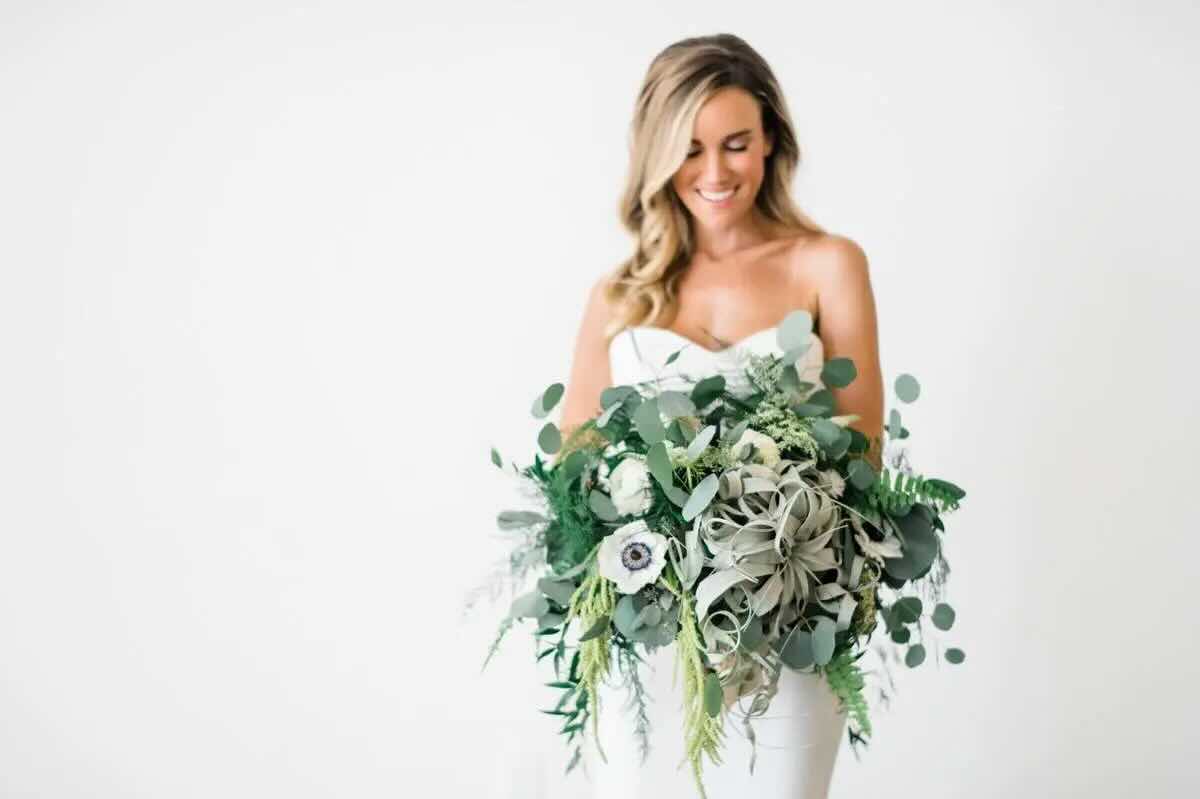
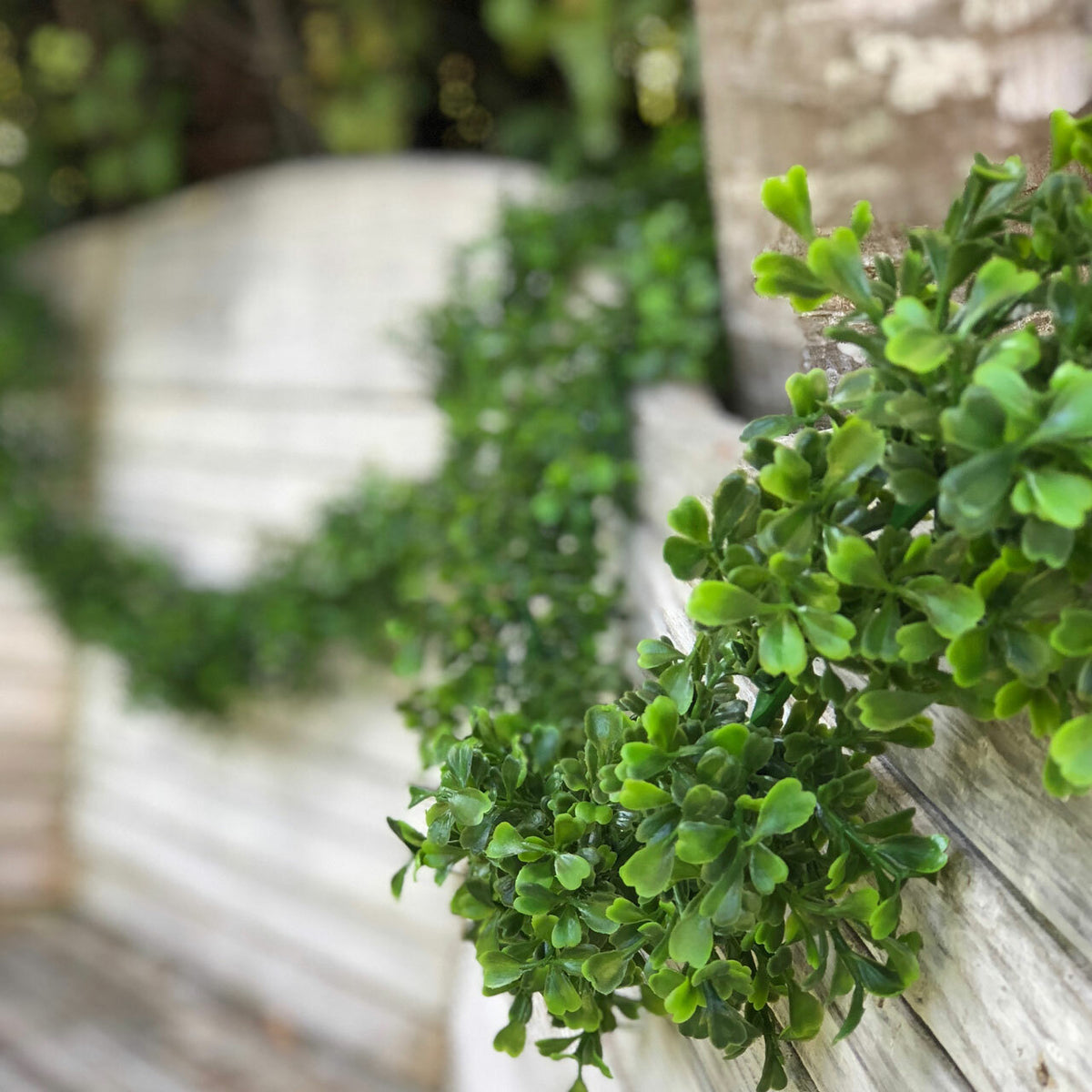

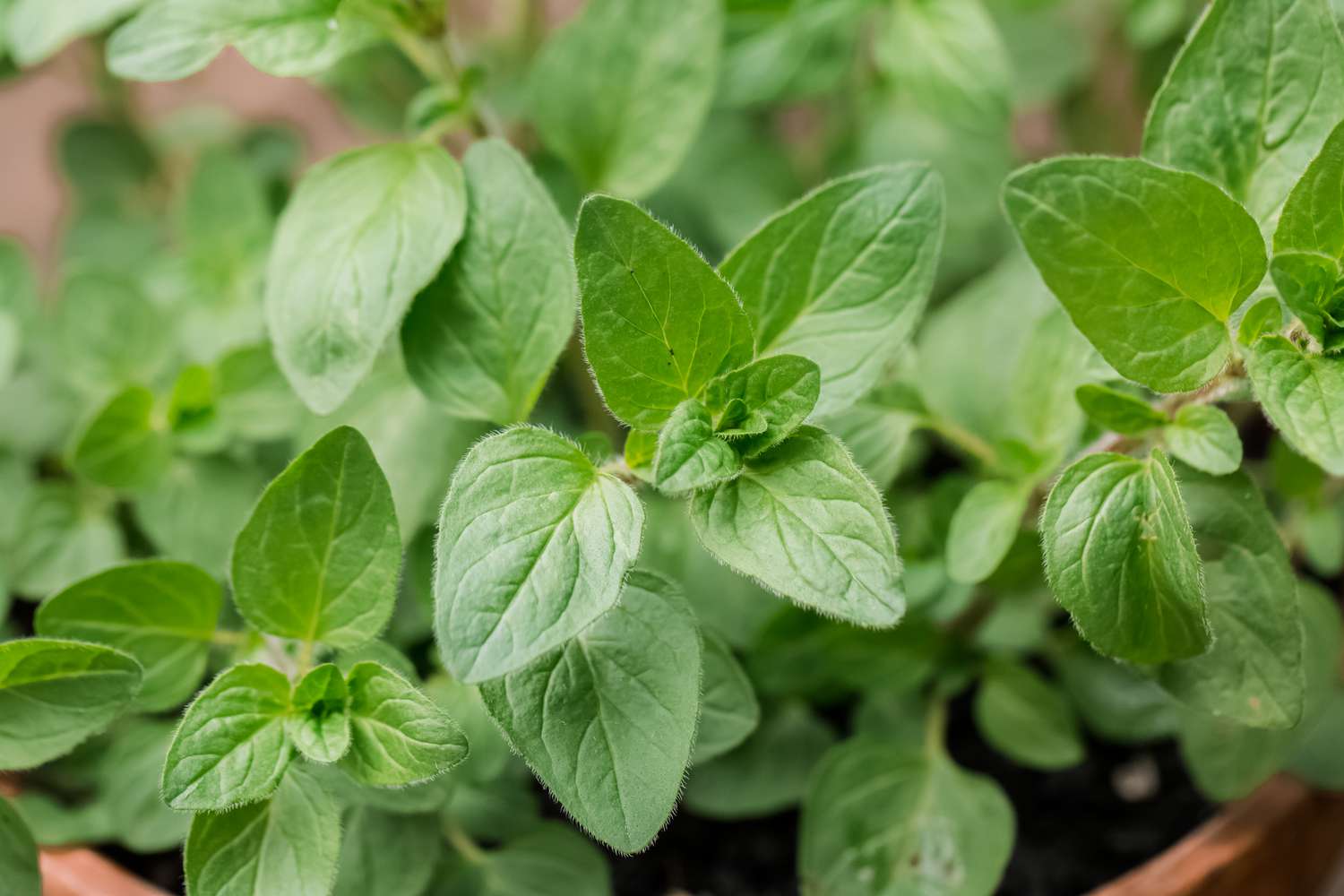


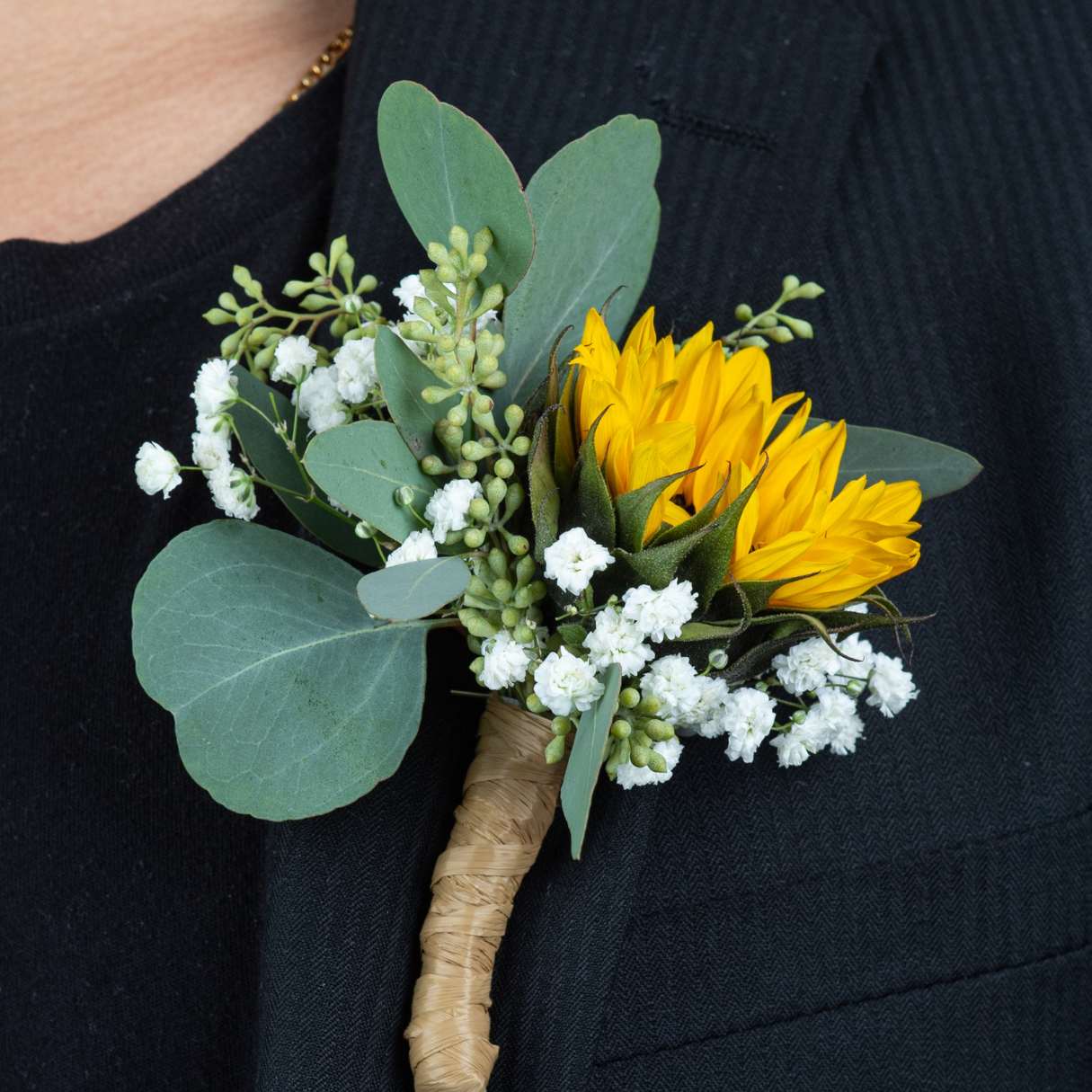
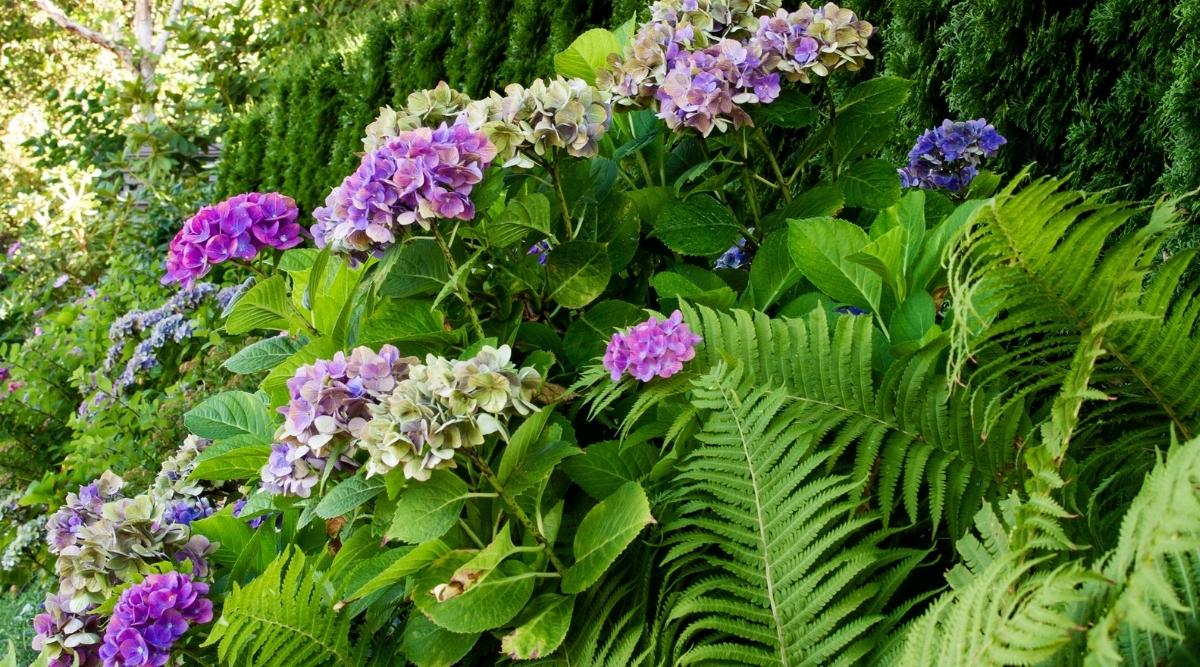
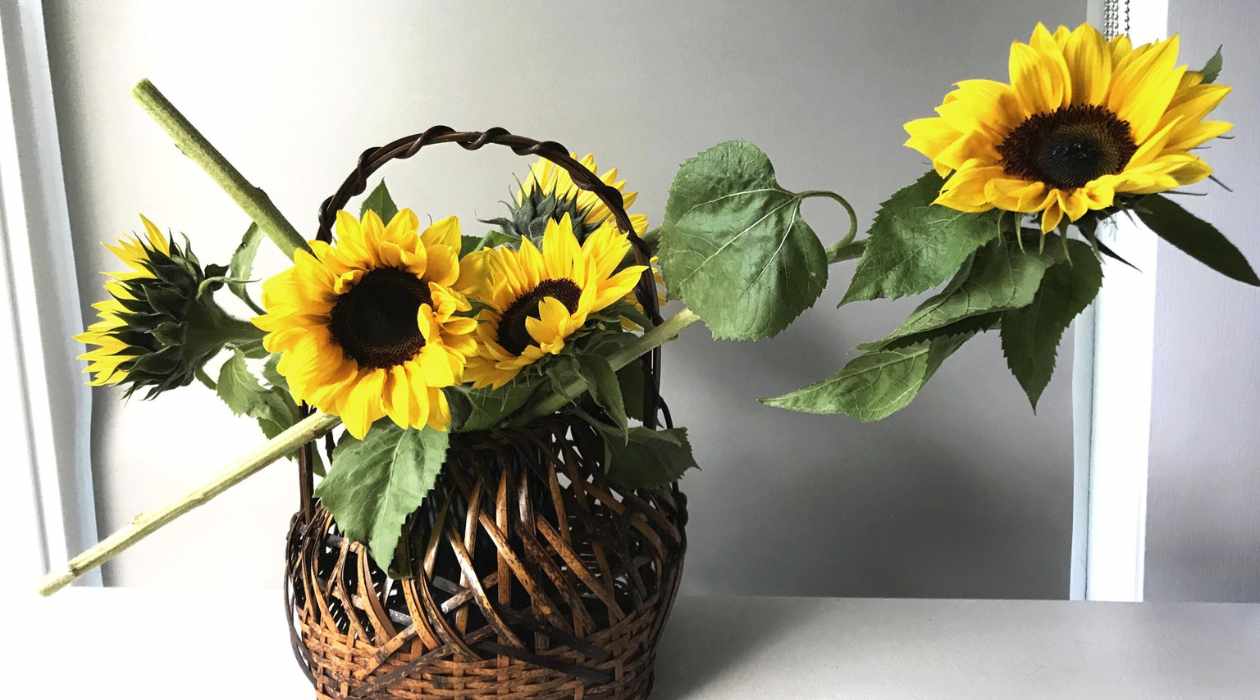


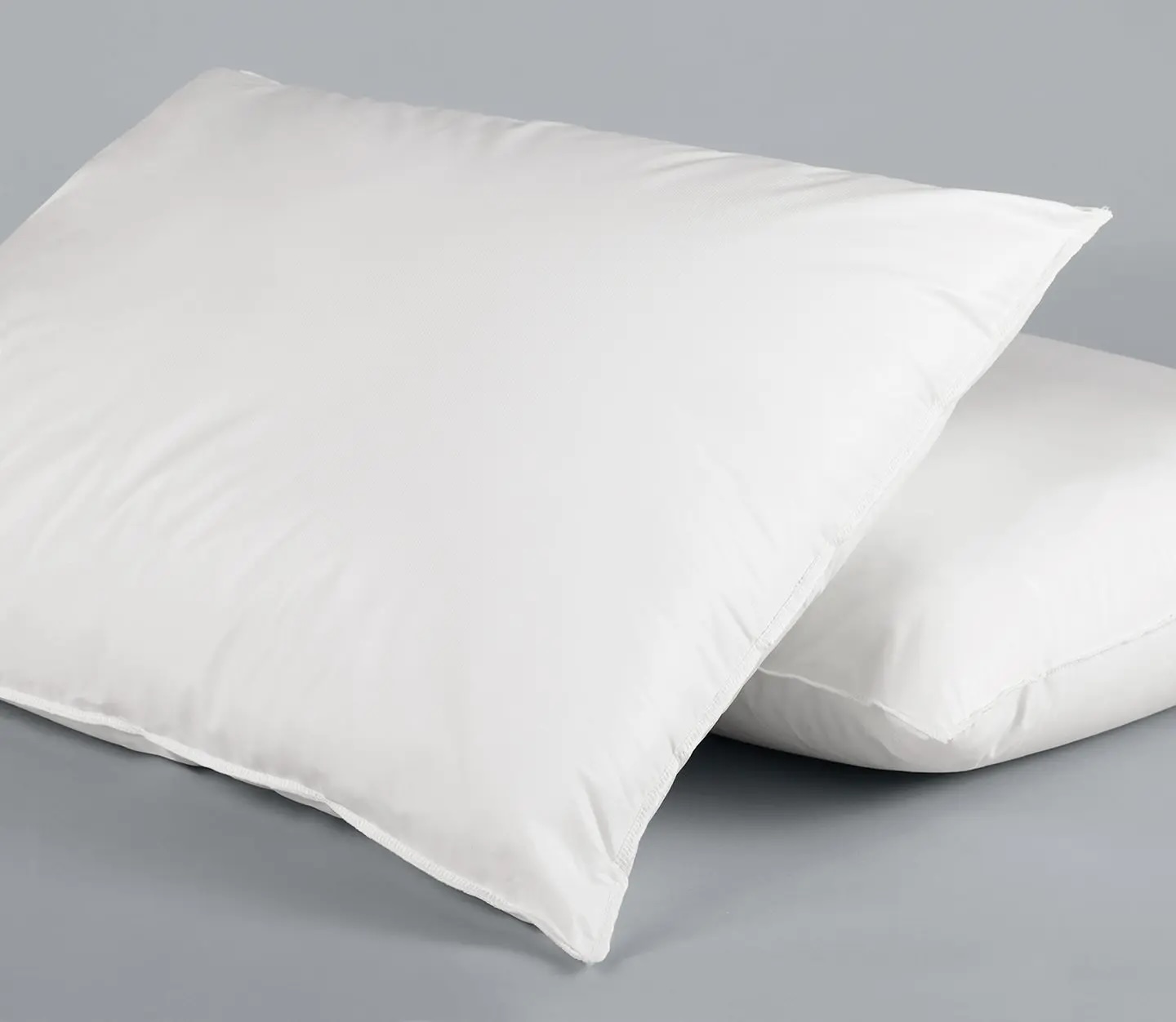


0 thoughts on “What Kind Of Greenery Do I Use In A Silk Bouquet”